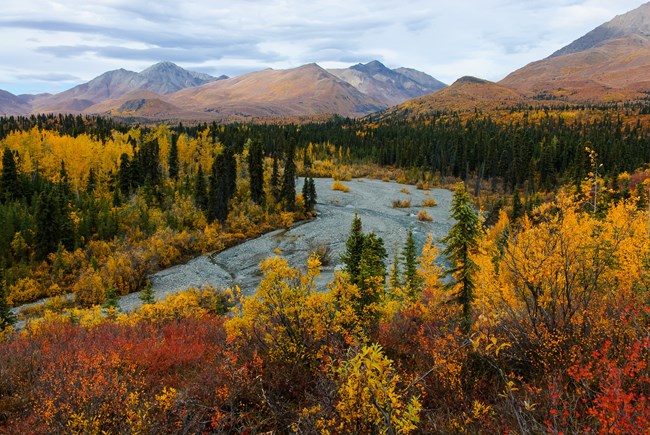
NPS Photo / Bryan Petrtyl
Overview
Wrangell-St. Elias National Park and Preserve is approximately 18-million acres in size, spanning the Wrangell-St. Elias and Chugach mountain ranges in southeastern Alaska. The Park encompasses a diversity of vegetation and landforms in a landscape that is largely unchanged by human development. The southern portions of the Park border the coastline of the Gulf of Alaska with a climate moderated by the ocean. The Chugach Range parallels the coast in this region and separates the coastal portion of the Park from the inland portion. These mountains include many glaciers and several peaks as high as 8000' elevation. The Wrangell Mountains and St. Elias Mountains form the main ridge of the Park extending several hundred miles from the northwestern portion of the Park at Mt. Drum to the southeastern portion of the Park near Mt. Hubbard. Six mountains in this range extend over 15,000 feet in elevation and numerous extensive glaciers and ice fields are found throughout this region of the Park.The Wrangell-St. Elias National Park and Preserve Land Cover Mapping Project was initiated in October 2003 in an effort to upgrade and improve vegetation/land cover information for this region. Projects of this nature covering millions of acres are typically based on satellite imagery and provide generalized categorical values and class information. This project presents the results of anecological land survey effort that inventoried, and classified ecosystems in the Wrangell-St. Elias National Park and Preserve. By analyzing the dynamic physical processes associated with coastal, riverine, lowland, glacial, hillside and mountainous environments, and the abundance and distribution of their diverse ecological resources, this study contributes to ecosystem management in national parklands in Alaska.
Products
The products of vegetation mapping projects are stored and managed in the National Park Service's Data Store, a repository for documents and publications relating to park resources. From the highlighted items below, click on the type of information you are looking for.
Last updated: July 17, 2018
